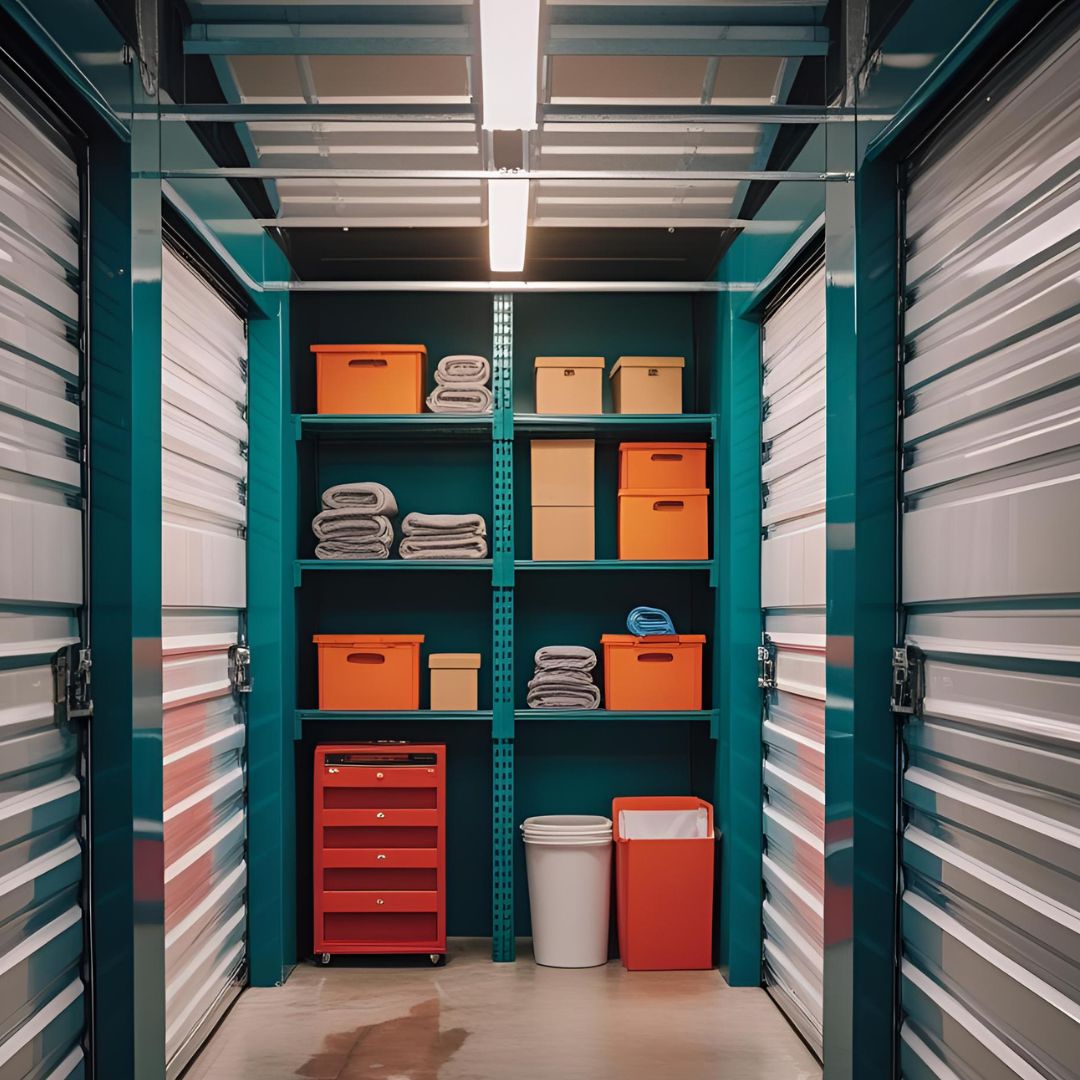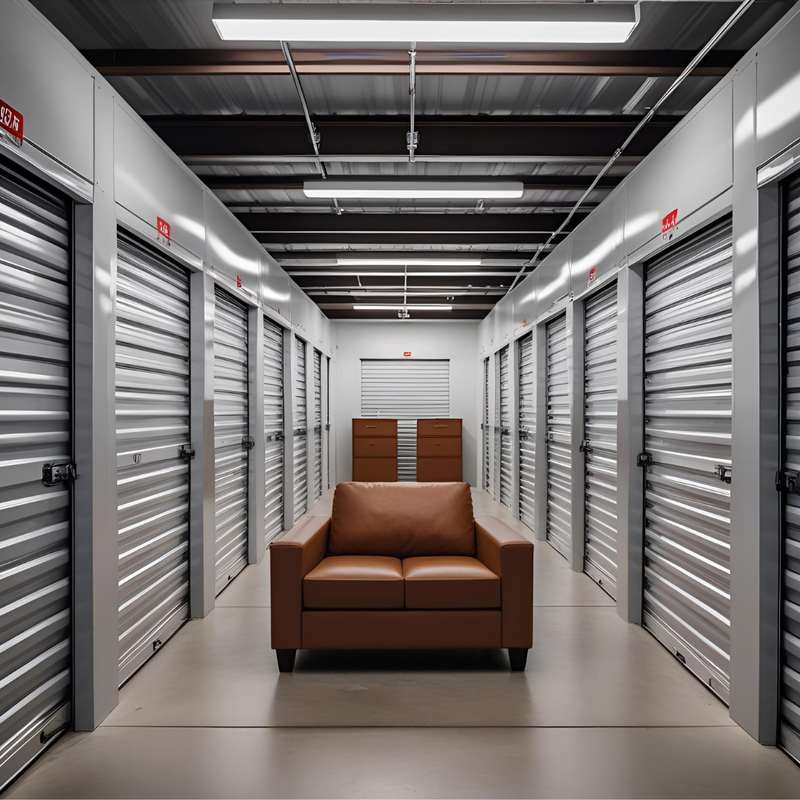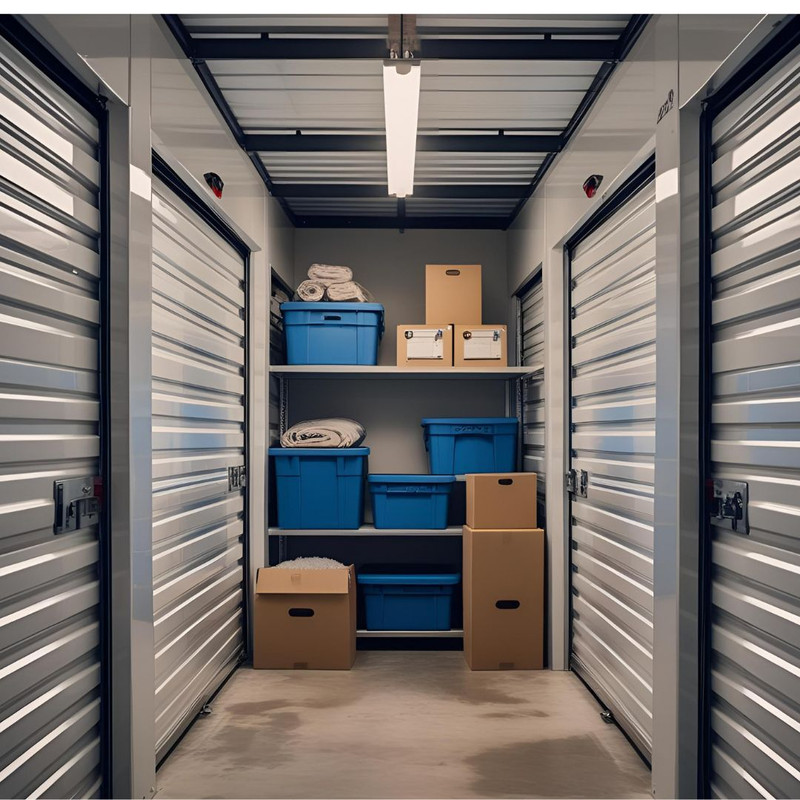Do I need climate-controlled storage for furniture in 2026?
Learn when climate-controlled storage is necessary for furniture in 2026 and how it affects your facility’s cost, reputation, and customer satisfaction.

Maintaining a positive facility reputation is essential to remaining competitive in the self storage industry. One way to achieve this is by ensuring your customers’ items are secure and at their best while stored with you.
Considering the cost of setting up a fully-functioning self storage facility with climate control is about 25–40% higher than traditional storage, you might wonder if it’s even necessary in the first place, especially for furniture.
Download the ultimate Self Storage e-book
Everything you need to know about setting up your self-storage facility.
Now, to the big question: Do I need climate-controlled storage for furniture?
The short answer is you don’t always need climate control; it depends on the type of furniture renters are storing. Join us as we explore why you might need climate control when housing furniture in your self storage facility, and some extra tips to keep items secured in your storage units, even without climate control.
Table of contents
- Key takeaways
- Do you need climate-controlled storage for furniture?
- Boosting facility attraction with climate control
- What items require climate-controlled storage?
- How to stay compliant when storing items in non-climate-controlled units
- How to prepare your storage facility to prevent mold and damage
- Frequently asked questions
- Does furniture need to be stored in climate control?
- How to store wood furniture without climate control?
- Will my furniture get ruined in storage?
- What are the risks of non-climate-controlled storage?
- Conclusion
Key takeaways
Climate control is highly recommended to maintain your facility’s reputation and offer superior services
Not all items need climate control, so if budget is a constraint, you may consider starting your self storage business by accepting storage for items that are suitable for a non-climate-controlled environment
To stay compliant, have a clear rule and duly inform your tenants of the limitations of your facility and what’s recommended for storage
You should also build your facility to align with the self storage association standard to ensure tenants’ items are secure, even without climate control
Do you need climate-controlled storage for furniture?
No, you don’t always need climate-controlled storage for furniture; only weather-sensitive furniture needs climate control.
Sensitive items, such as antique furniture, musical instruments, and family heirlooms, are typically vulnerable to temperature and humidity fluctuations. If not stored in a climate-controlled environment, these pieces may warp, crack, or develop mold. Equipping your storage facility with climate-controlled units can prevent significant damage to these valuable and delicate items.
On the other hand, items like metal bed frames, patio furniture, and certain kitchen utensils are generally more robust and can withstand extreme temperatures when stored in a well-maintained and secure facility. However, you still need to take extra precautions to prevent mold buildup. We’ll discuss some preventive tips later on in this article.
Another critical reason you might consider climate control in your facility is to improve your reputation and attract more tenants.

Boosting facility attraction with climate control
If you offer climate-controlled options at your storage facility, you can attract a broader range of customers who require added protection for their furniture. As a self storage operator or facility owner, providing a climate-controlled space could differentiate your business from traditional storage facilities. In the long term, this added feature not only broadens your customer base but also enhances your facility’s reputation as a premium storage solution. The following list can help you distinguish between items that need climate-controlled storage and those that don’t, helping you make a more informed decision.
What items require climate-controlled storage?
If your facility doesn’t currently have a budget for climate control, you should be aware of the items you can conveniently store. This will improve your reputation by only accepting suitable items.
Beyond furniture, here is a list of items that require climate-controlled units and items that don’t:
1. Items needing climate-controlled storage
As mentioned earlier, you need climate control for items sensitive to changes in weather conditions and humidity, and these may include:
Wood furniture: Wood can warp, crack, or swell under fluctuating conditions, so a stable environment is essential to prevent structural damage. High humidity encourages mold, while low humidity leads to shrinkage and splits. Therefore, climate control is required to maintain the facility’s temperature and the wood furniture’s integrity.
Electronics: Electronic circuits are vulnerable to condensation and moisture. Heat and humidity can lead to corrosion, malfunction, or failure of internal components, making climate control essential.
Artwork & antiques: Paper, canvas, mixed media, etc., degrade in inconsistent climates. Weather and humidity fluctuations can promote mold growth, fading, cracking, and general deterioration. Hence, it’s important to have climate control available for storing these items.
Photographs, documents, and books: High humidity can cause mold and ink bleed, while low humidity can cause brittleness. You need climate control for these items, as they require consistent, moderate conditions to remain stable.
Musical instruments: Wood, metal, and glue within instruments react to humidity swings, resulting in warping, cracking, tuning issues, or glue failure. If you must store these items, consider equipping your storage with climate control.
Fine wine and spirits: Heat spoils wine, dries corks, and may cause bottles to leak. Climate control is needed to keep wine at its optimum storage temperature of 55-85°F.
2. Items suitable for non-climate-controlled storage
If you’re operating a non-climate-controlled facility, you can store any item that doesn’t react negatively to humidity changes and weather conditions, including:
Patio furniture (metal, plastic, and teak): These items are designed for outdoor use and are resilient to temperature and humidity variations. Provided your storage facility is built to the required standard and according to storage unit laws, you can conveniently store these items.
Gardening tools and hardware: Rakes, shovels, hoses, lawnmowers, etc., are also built to withstand changing weather conditions. Just be sure to regularly inspect your facility for any leakage and ensure proper ventilation to minimize humidity and ensure a dry environment.
Kitchen utensils and cookware: Pots, pans, small appliances, etc., are engineered for fluctuating conditions. You can safely store them in a non-climate-controlled unit, provided your facility is built to the required standard.
Clothing or linens in sealed bins: Most fabrics handle moderate temperature and humidity swings, so you don’t necessarily need climate control to store them. You can advise your renters to keep their items properly sealed in plastic bins to maintain relative humidity and temperature.
Plastic bins, decorations, and toys: Rigid plastics are barely affected by heat or cold, so a non-climate-controlled storage unit can safely store these items. However, always follow the standard storage building codes to ensure items aren’t damaged by water and extreme humidity.
Knowing what you can and cannot store in a non-climate-controlled storage unit allows you to safely accept customers’ items with the reassurance of security and peace of mind, especially if your storage doesn’t provide climate control. In the same vein, it’s equally important to ensure renters are aware of your storage’s limitations to maintain your facility’s reputation and avoid legal issues—we provide some helpful tips below.
How to stay compliant when storing items in non-climate-controlled units
As a self storage operator, protecting customer belongings, especially in non-climate-controlled units, is essential not only for preserving item quality but also for maintaining your facility’s reputation. While these types of units are ideal for many durable items, they require careful management to ensure compliance and shared responsibility between you and your renters.
You should consider the following to stay compliant with the law:
-
Define what can and cannot be stored: Create and share a clear list of permitted and prohibited items. Certain goods, such as electronics, artwork, perishable items, or anything sensitive to temperature swings, should be clearly marked as unsuitable for non-climate-controlled storage. You can easily notify renters of such a list if you offer booking via self storage software.
-
Set expectations through terms and conditions: Your rental agreement should explicitly outline the risks of storing sensitive items in non-climate-controlled environments. Clearly state that certain damages (such as those caused by humidity or heat) are outside the facility’s control.
-
Emphasize shared responsibility: While your facility should offer reasonable protections, it’s important to remind customers that they’re also responsible for their belongings. Encourage them to use proper packing materials and to pack their items independently.
-
Educate customers with storage tips: Offer practical tips, such as sealing fabrics in airtight bins or using desiccants, to help renters store their items correctly. This positions your facility as proactive and customer-focused.
-
Inspect items upon move-ins: Perform a brief inspection during move-in to ensure that inappropriate items aren’t being stored. This way, you can quickly identify any item that may not be suitable for storage and warn the owners of the risk involved.
By implementing these best practices, you can reduce liability, improve customer trust, and provide a consistent, professional storage experience, even without climate control. Let’s conclude with some additional practical tips to help you prevent mold and damage in a non-climate-controlled facility.
How to prepare your storage facility to prevent mold and damage
To ensure items stored in your facility aren’t damaged from fluctuating weather conditions and improper handling, you should consider the following:
-
Provide suitable storage containers
-
Keep stored items off the ground
-
Follow standard building codes
1. Provide suitable storage containers
Choosing the right containers is crucial when storing items, particularly those prone to moisture damage. As a facility owner, you can make provisions for these containers, as renters may not always have them ready.
Plastic or metal containers can provide a more impermeable barrier against moisture than traditional cardboard boxes. They help block out moisture and prevent mold and mildew, making them a smart choice for long-term storage. Additionally, airtight containers offer added protection by sealing in dryness and keeping out humidity.
2. Keep stored items off the ground
Stack stored items on pallets or shelves to further safeguard stored items from potential condensation or flooding. This approach creates a buffer between the stored items and the floor, reducing the risk of moisture contact. By keeping furniture and other sensitive items off the ground, you can prevent damage that may be caused by unexpected water accumulation.
3. Follow standard building codes
Adhering to the standard self storage organization building code is not just about regulatory compliance; it’s essential for maintaining a safe and reliable facility. These codes ensure that your storage units are constructed to withstand extreme temperatures and humidity fluctuations, providing a stable environment for stored items. Regularly inspect your facility and units in accordance with this self storage maintenance checklist to preserve the integrity of your facility and protect your clients’ valuable belongings.

Conclusion
In summary, do I need climate-controlled storage for furniture?
Knowing when climate-controlled storage is necessary for furniture can help you offer superior service and maintain your facility’s integrity. By offering climate-controlled units, you provide a vital service that protects sensitive clients’ needs from the damaging effects of extreme temperatures and humidity fluctuations. This not only ensures the longevity of stored furniture but also enhances customer satisfaction and trust.
As you build your self storage units, consider your clients’ needs and the types of items they store. Whether it’s antique furniture or delicate musical instruments, the right storage solution can make all the difference in safeguarding their valuables. And if your storage facility doesn’t offer climate control, you can easily inform renters of items that can or cannot be stored by offering contactless booking via self storage software.
Frequently asked questions
Does furniture need to be stored in climate control?
Yes, furniture should be stored in climate-controlled storage if it’s sensitive to extreme temperatures or humidity levels. Materials like wood, leather, and fabric can warp, crack, or develop mold in fluctuating conditions. Climate-controlled storage maintains a consistent environment, protecting furniture from the potential damage caused by extreme heat, cold, and moisture, ensuring that stored items remain in pristine condition over time.
How to store wood furniture without climate control?
develop mold in fluctuating conditions. Climate-controlled storage maintains a consistent environment, protecting furniture from the potential damage caused by extreme heat, cold, and moisture, ensuring that stored items remain in pristine condition over time. When storing wood furniture in a non-climate-controlled storage unit, cover it with a cotton sheet or blanket. Cotton is breathable and helps protect against dust and scratches while allowing air circulation to prevent moisture buildup. Ensure the furniture is clean and dry before storing, and consider using desiccants to absorb any excess humidity. Keeping the storage area dry and well-ventilated can also help preserve the furniture’s integrity.
Will my furniture get ruined in storage?
The risk of furniture getting ruined in an indoor storage unit depends on its initial condition and the storage environment. Furniture in good condition is more likely to withstand storage than pieces already damaged or worn. Choosing an appropriate storage method, such as using climate-controlled facilities or breathable covers, can significantly minimize damage risks. Regular checks during storage can also help in maintaining the furniture’s condition.
What are the risks of non-climate-controlled storage?
Non-climate-controlled storage poses risks, such as exposure to fluctuating temperatures and humidity, which can lead to warping, cracking, or mold growth on furniture. Wood and leather are particularly vulnerable to these changes and may suffer permanent damage over time. Additionally, metal components may rust, and fabrics can become musty. Without climate control, it’s crucial to take preventive measures, like using protective covers and ensuring adequate ventilation.